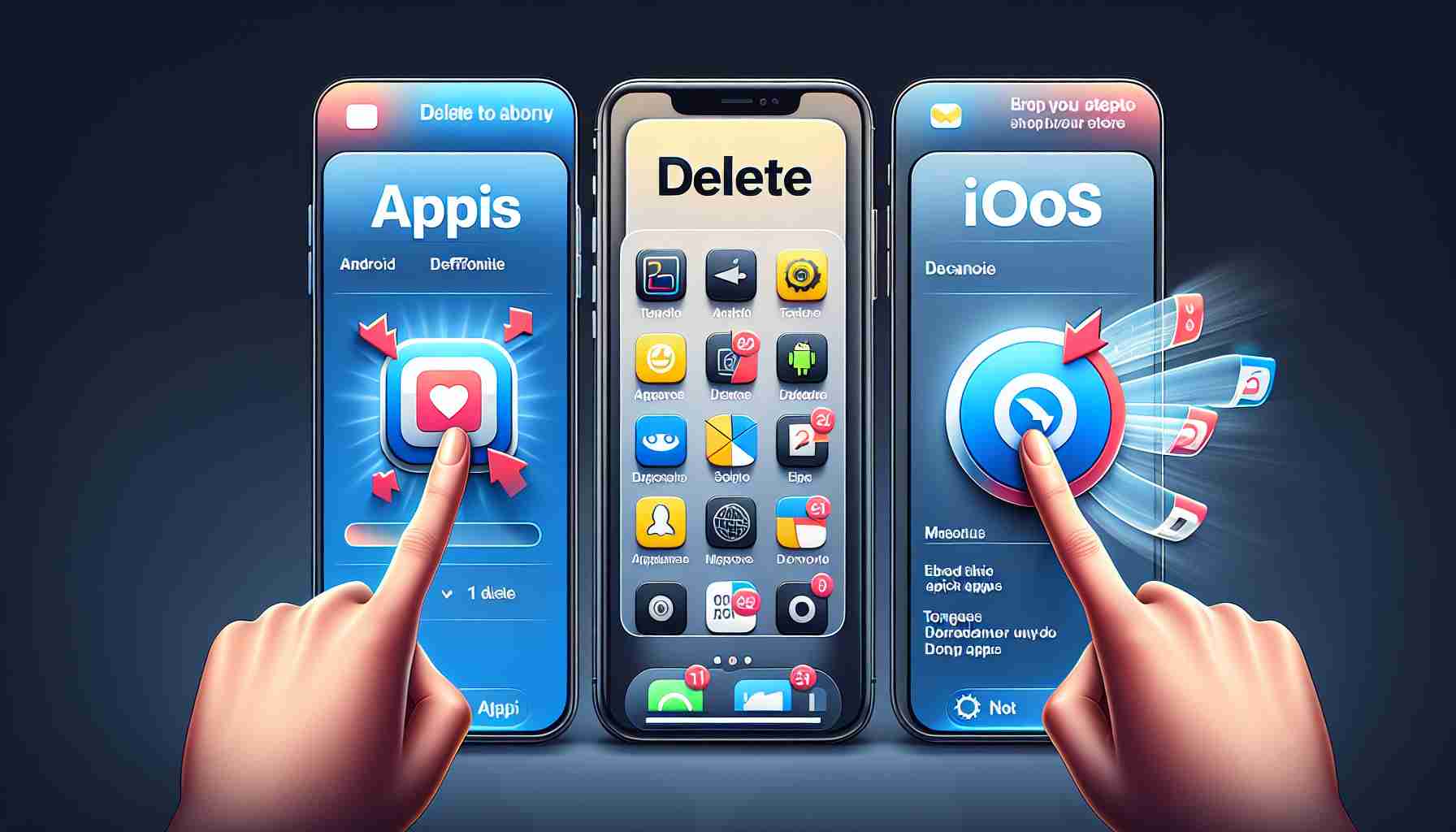Dealing with unused apps on your smartphone not only clutters your device but also diminishes storage space. Many users frequently ask how they can eliminate these digital remnants. Both Android and iOS platforms offer several methods to remove apps.
Removing Apps from Android Devices
The process is as straightforward as when using your device. However, simply deleting an app from the home screen doesn’t mean it’s gone from the device. Uninstalling an app typically wipes out all associated saved data.
On an Android, you can uninstall apps via touchscreen. After unlocking your device, long-press the app icon you wish to remove until a ‘Uninstall’ option appears. By selecting ‘Uninstall,’ the app, along with its data, is completely removed from your device.
Note that there is a difference between ‘Remove’ and ‘Uninstall.’ The former only deletes the app from the home screen, while the latter completely eradicates it from the system.
If you prefer, you can also delete apps through the ‘Settings’ menu. Navigate to ‘Apps’ or ‘Applications,’ select the undesired app, and tap ‘Uninstall.’ However, some system apps can only be deactivated since they come pre-installed on the device.
The Simplified iOS App Deletion Process
Apple devices make the process somewhat easier. On the home screen, press and hold an app until it jiggles and a grey circle with a minus sign appears. By tapping this symbol, you activate the deletion process. An alternative is selecting ‘Remove App’ followed by ‘Delete’ to finalize the removal.
With these simple steps, keeping your device’s interface clean and managing your storage becomes a hassle-free task.
Key Questions Answered:
– How do you remove apps from Android and iOS devices?
– What is the difference between ‘Remove’ and ‘Uninstall’ on Android?
– How can you ensure that all data associated with an app is deleted on Android?
– What is the process to delete apps on an Apple device?
Answers:
– On Android, apps can be uninstalled by long-pressing the app icon and selecting ‘Uninstall,’ or through the ‘Settings’ menu under ‘Apps’ or ‘Applications.’ On iOS, pressing and holding an app icon until it jiggles and then tapping the grey circle with a minus sign will initiate the deletion process.
– ‘Remove’ on Android will take an app off the home screen but not delete it from the device, while ‘Uninstall’ will completely remove the app and its data.
– To ensure all data is deleted when uninstalling an Android app, you should select ‘Uninstall’ rather than ‘Remove.’ Some apps also offer the option to clear data before uninstalling within the application’s ‘Storage’ settings.
– To delete apps on an iOS device, tap and hold the app icon until it jiggles, then tap the grey circle with the minus, followed by ‘Delete’ to confirm the removal.
Key Challenges/Controversies:
One challenge associated with deleting apps is that some pre-installed (system) apps cannot be uninstalled due to restrictions set by the device manufacturer or the operating system. Users can typically only disable these apps unless they have advanced knowledge or root access (on Android), which itself can pose risks and void warranties.
Advantages and Disadvantages:
Advantages:
– Deleting apps frees up storage space, leading to better device performance.
– Removing unused apps can declutter the interface, making it easier to navigate and find essential apps.
– Uninstalling apps can enhance security by removing potentially outdated or vulnerable software.
Disadvantages:
– Deleting an app usually means all associated data is lost unless backed up separately.
– In some cases, users might accidentally delete apps containing essential data without proper backup.
– System apps cannot be easily uninstalled, which may frustrate users who are seeking a completely decluttered device.
For more information on managing your smartphone and app deletion, visit the official support websites for Android and iOS:
– Android Support
– Apple Support
The source of the article is from the blog mivalle.net.ar
